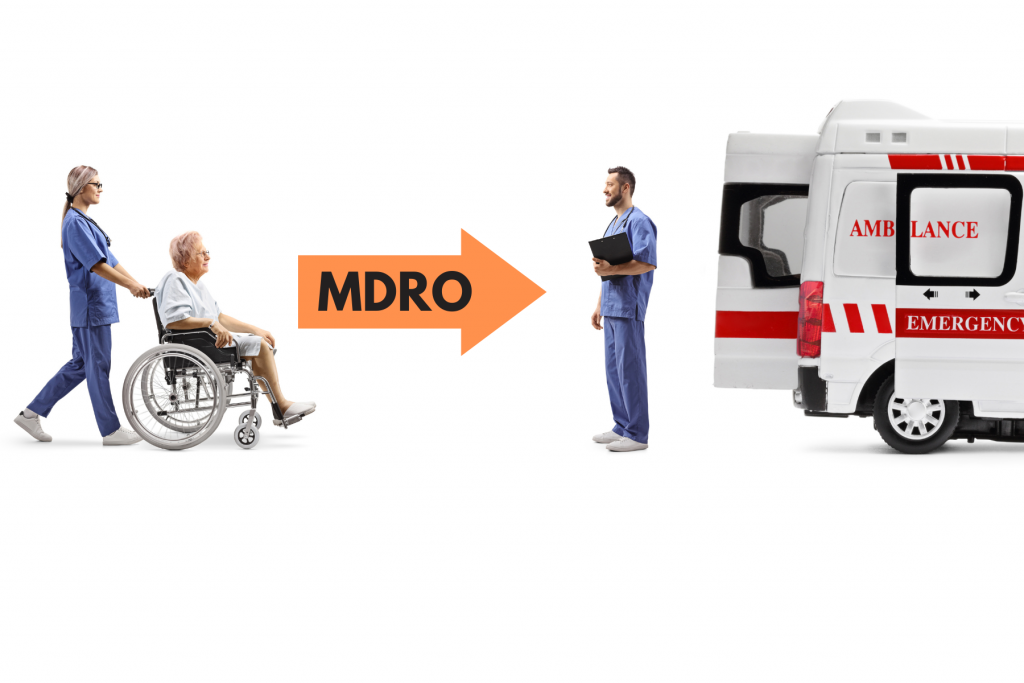
Healthcare-Associated Infections and Infection Prevention (HAIIP) Program
What is HAIIP?
The Healthcare-Associated Infections and Infection Prevention (HAIIP) Program of San Bernardino County Department of Public Health (DPH), Communicable Disease Section, investigates infections that patients acquire while receiving treatment for other conditions within a healthcare setting. The HAIIP Program focuses its efforts on providing technical assistance and support to keep patients, staff and visitors safe from healthcare-associated infections in skilled nursing facilities (SNFs) and long-term care facilities (LTCFs).
What Are Healthcare-Associated Infections?
Healthcare-associated infections (HAIs) are infections people get while they are receiving healthcare for another condition. HAIs can happen in any healthcare facility, including hospitals, ambulatory surgical centers, end-stage renal disease facilities, and long-term care facilities. Bacteria, fungi, viruses, or other, less common pathogens can cause HAIs.
HAIs are a significant cause of illness and death — and they can have serious emotional, financial, and medical consequences. On any given day, about 1 in 31 hospitalized patients has at least one infection related to hospital care. These infections lead to tens of thousands of deaths and cost the U.S. health care system billions of dollars each year.

MDRO: Multi-Drug Resistant Organism
What Services Do We Offer?
- Technical assistance
- Educational campaign support
- Train-the-trainer education (fit-test training)
- Presentations for staff on infection prevention
- Investigate outbreaks to reduce transmission
- Guidance to prepare for natural disasters and outbreaks
- Antimicrobial Stewardship materials educational
Contact Us
Email: HAIIP@dph.sbcounty.gov
HAIIP Fax: (909) 381-8473
Business Hours:
Phone: (800) 722-4794
Monday – Friday
8:00 AM – 5:00 PM
Closed During County Observed Holidays
After Hours Phone:
(800) 472-2376 (available after hours, weekends, and holidays)
Interfacility Reporting Form
Healthcare providers should use the interfacility transfer communication form to ensure essential infection control information is communicated clearly between facilities. This helps the receiving facility implement necessary precautions and continue appropriate treatment, reducing the risk of infection spread. Standardizing this communication improves patient safety and supports continuity of care.
The California Department of Public Health, Heathcare-Associated Infections Program, strongly recommends communicating the information included in the Interfacility Transfer form by phone, in advance of transfer, for patients with the following high-priority multidrug-resistant organisms (MDRO):
Healthcare Facility Transfer Form
Cohorting Guidance
- Candida aurisCandida auris
- General Respiratory IllnessGeneral Respiratory Illness
- GastroenteritisGastroenteritis
Candida auris is a multidrug-resistant fungus that causes serious infections, particularly in patients with multiple medical issues in healthcare settings like hospitals and nursing homes. It can lead to bloodstream and other invasive infections, with over one in three patients dying within a month of being diagnosed with an invasive C. auris infection. The fungus is difficult to identify and may be misdiagnosed as other types of fungi unless specialized laboratory methods are used. Additionally, C. auris is resistant to many common antifungal medications, making treatment challenging.
The number of C. auris cases has increased rapidly since its discovery in 2009, and it has now been reported in many countries, including the United States. Its ability to spread and cause outbreaks in healthcare settings is a significant concern. C. auris can colonize patients for extended periods, persist in the environment, and even resist common disinfectants, leading to difficulties in controlling its spread.
To prevent outbreaks, early detection is essential. Healthcare facilities should work with their laboratory teams to ensure they can properly identify C. auris or know when to send samples for further analysis. Surveillance protocols should be in place to quickly identify suspected cases. Facilities must also be aware of the patients most at risk for infection, including those recently treated in post-acute care settings, or those with a history of healthcare outside the U.S. or who are colonized with other resistant organisms.
If C. auris is detected in a facility, strict infection control measures should be implemented. This includes placing infected or colonized patients on Transmission-Based Precautions, ideally in single rooms, using appropriate gowns and gloves, reinforcing hand hygiene, and ensuring environmental cleaning with disinfectants that are effective against C. auris. Healthcare staff should also screen close contacts of infected patients and communicate the patient’s C. auris status when transferring them to other facilities. Clear communication and coordination with environmental services and public health authorities are key to limiting the spread of this dangerous fungus.
Influenza and Non COVID-19 Respiratory Illness Outbreak Resources:
Recommendations for the Prevention and Control of Viral Gastroenteritis Outbreaks in California Long-term Care Facilities: